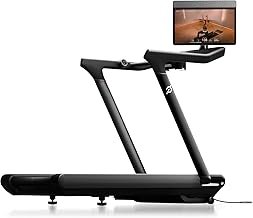TDEE Calculator
Use this Total Daily Energy Expenditure (TDEE) calculator to estimate how many calories your body burns daily, including physical activity. This helps guide your calorie intake for weight loss, maintenance, or muscle gain.
Your Total Daily Energy Expenditure
TDEE: kcal/day
The Ultimate Guide to TDEE Calculators for Effective Weight Management
1. Introduction: Why TDEE Is the Secret Weapon in Weight Management
Weight management is a deeply personal journey, influenced by lifestyle, goals, and biological factors. While there’s no one-size-fits-all solution, understanding how your body burns calories is one of the most powerful steps you can take. That’s where TDEE—Total Daily Energy Expenditure—comes into play.
TDEE refers to the total number of calories your body burns each day through basic functions (like breathing and digestion) and all physical activities. With this number, you gain a blueprint to strategically manage your weight, whether you aim to lose fat, build lean muscle, or simply maintain a healthy lifestyle.
In today’s age of personalized nutrition and data-driven fitness, using a TDEE calculator can be transformative. Unlike generic calorie counting methods, it considers individual details like age, gender, height, weight, and activity levels, giving you an accurate estimate tailored to your body and habits.
2. What Makes Up Your TDEE?
Your TDEE is comprised of three main components:
a. Basal Metabolic Rate (BMR)
This is the number of calories your body needs to perform essential life-sustaining functions at rest. BMR supports breathing, circulation, temperature regulation, and cell production. It typically accounts for about 60–70% of your TDEE.
b. Thermic Effect of Food (TEF)
The process of digesting, absorbing, and metabolizing the food you eat uses energy—usually around 10% of your daily caloric burn.
c. Physical Activity Level (PAL)
This includes structured workouts and everyday movements like walking, cleaning, gardening, and fidgeting. It can account for 15–30% of your total daily expenditure depending on your activity level.
3. Why Using a TDEE Calculator Matters
Knowing your TDEE equips you with key insights to support your health goals. Here’s how:
– Personalized Caloric Guidance: Instead of using cookie-cutter calorie recommendations, a TDEE calculator offers precise daily intake targets based on your body and lifestyle.
– Goal-Specific Adjustments: Whether your objective is fat loss, muscle gain, or maintenance, TDEE gives you the foundation to create a targeted plan.
– Efficient Meal Planning: When you know how much you should be eating, designing meals becomes easier and more effective.
– Accurate Tracking: If progress stalls, recalculating your TDEE can reveal whether your intake or activity needs to be adjusted.
4. How to Calculate TDEE: Step-by-Step
To determine your TDEE, follow these two steps:
Step 1: Calculate Your BMR Using the Mifflin-St Jeor Equation
For men: BMR = (10 × weight in kg) + (6.25 × height in cm) − (5 × age in years) + 5
For women: BMR = (10 × weight in kg) + (6.25 × height in cm) − (5 × age in years) − 161
Step 2: Multiply BMR by Your Activity Factor
| Activity Level | Description | Multiplier |
|---|---|---|
| Sedentary | Little or no exercise | 1.2 |
| Lightly Active | Light exercise 1–3 days/week | 1.375 |
| Moderately Active | Moderate exercise 3–5 days/week | 1.55 |
| Very Active | Intense exercise 6–7 days/week | 1.725 |
| Super Active | Physically demanding job or twice-a-day training | 1.9 |
Example:
A 35-year-old woman weighing 65 kg, standing 165 cm tall, and moderately active:
BMR = (10 × 65) + (6.25 × 165) − (5 × 35) − 161 = 1356.25
TDEE = 1356.25 × 1.55 = ~2,103 calories/day
5. Adapting Your Calorie Intake Based on Your TDEE
Once you know your TDEE, tailor your caloric intake to meet your objectives:
– For Weight Loss: Reduce 500–700 calories per day to aim for safe, steady weight loss (approx. 1–1.5 lbs/week).
– For Muscle Gain: Add 250–500 calories per day, focusing on protein intake and resistance training.
– For Maintenance: Maintain your daily intake around your TDEE and monitor weight and body composition changes.
Always prioritize nutrient-rich, balanced meals over simply counting calories.
6. How Activity Levels Shape Your TDEE
One of the most crucial aspects of TDEE is the role of activity. Daily activity includes far more than gym workouts—it also encompasses walking, chores, and even typing.
Being honest about your true activity level is essential. Overestimating can lead to overeating, while underestimating may cause unnecessary calorie restriction.
Consider tracking your movement with a pedometer or fitness app for a more accurate assessment.
7. Common Mistakes to Avoid with TDEE Calculators
Even the most reliable calculator won’t help if you make these common errors:
– Inaccurate Inputs: Age, weight, and activity levels must be current.
– Ignoring Physical Changes: As you gain muscle or lose fat, recalculate your TDEE.
– Misjudging Activity Level: Don’t overinflate your movement level.
– Choosing Poor-Quality Calculators: Stick to trusted sources like MyFitnessPal, Bodybuilding.com, or Healthline.
– Focusing Solely on Calories: Macronutrients and food quality matter too.
8. Comparing the Best TDEE Calculator Tools
Here’s a breakdown of popular tools:
a. Calculator.net
Straightforward, fast, and user-friendly. Excellent for beginners.
b. Bodybuilding.com
More advanced options tailored to muscle building and fat loss.
c. MyFitnessPal
Integrated with a food diary and exercise tracker. Ideal for daily use.
d. Lifesum
Offers aesthetic design, meal plans, and lifestyle tracking.
e. Excel Templates
Customizable for tech-savvy users who prefer manual data control.
Each tool has its benefits—select one that suits your preferences and goals.
9. Real-Life Success Stories
Sarah, 32, lost 30 lbs in six months after realizing she was eating far below her TDEE and plateauing. With accurate tracking and a 500-calorie deficit, she finally saw progress without starving.
Jake, 28, gained 15 lbs of lean muscle by increasing his intake based on a 300-calorie surplus from his TDEE. Combined with strength training, he saw significant gains in under a year.
Linda, 45, managed to shed 20 lbs and reduce fatigue by aligning her meals with her calculated needs. As a full-time working mother, this approach gave her clarity and structure.
Case Study Table:
| Name | Age | Goal | Outcome |
|---|---|---|---|
| Sarah | 32 | Fat Loss | Lost 30 lbs in 6 months |
| Jake | 28 | Muscle Gain | Gained 15 lbs of lean muscle |
| Linda | 45 | Energy Boost | Lost 20 lbs, more daily energy |
10. Nutrition Tips That Work With TDEE
While calorie quantity is crucial, food quality amplifies your results:
– Eat enough protein (1.2–2.2g per kg of body weight)
– Include healthy fats (avocados, olive oil, nuts)
– Focus on complex carbs (quinoa, oats, brown rice)
– Stay hydrated
– Avoid ultra-processed foods
11. How to Stay Consistent With Your Plan
Consistency is more powerful than perfection. Here’s how to build sustainable habits:
– Recalculate TDEE monthly
– Track meals with an app
– Plan ahead (meal prep)
– Weigh yourself weekly (optional)
– Celebrate non-scale victories (energy, focus, sleep)
12. When to Consult a Professional
If you’re facing medical conditions, hormonal imbalances, or long-standing weight issues, speak with a dietitian or physician. A TDEE calculator is a tool—not a diagnosis.
13. Conclusion: Why TDEE is a Game Changer
Understanding your TDEE is one of the smartest ways to take control of your health. It provides clarity, structure, and a personalized approach to eating and activity.
Whether you’re just starting your fitness journey or refining your routine, using a TDEE calculator ensures you’re making informed, data-driven decisions. Combined with good nutrition and consistent habits, it’s a formula that truly works.
Take the time to calculate your TDEE today—and let that number guide you to better energy, confidence, and lifelong wellness.
14. TDEE and Macronutrient Distribution
Knowing your TDEE is only half the battle; understanding how to divide those calories into macronutrients (macros) is what truly powers your results.
– Protein: Essential for muscle repair, metabolism, and satiety. Aim for 20–30% of your daily intake.
– Carbohydrates: Your body’s main energy source. About 40–50% of your intake should come from carbs, particularly complex carbs.
– Fats: Crucial for hormonal health and brain function. Healthy fats should make up 20–30% of your total intake.
For someone with a 2,200-calorie TDEE:
– Protein (25%) = 550 calories ÷ 4 = ~137g
– Carbs (45%) = 990 calories ÷ 4 = ~248g
– Fats (30%) = 660 calories ÷ 9 = ~73g
Customizing these ratios based on your body type and fitness goals will optimize your energy, mood, and physical results.
15. The Psychological Advantage of Tracking TDEE
Knowing your TDEE isn’t just a technical calculation—it can reduce stress, boost motivation, and build confidence. When you understand what your body needs, you stop second-guessing every bite and start building a healthy, sustainable relationship with food.
This sense of control can make you less vulnerable to diet fads and misinformation. Over time, the psychological benefits of informed eating compound, helping you stay committed and consistent.
16. The Role of Hormones and Metabolism
While TDEE gives a practical framework, it’s important to acknowledge hormonal and metabolic variations. For example:
– Thyroid issues can lower metabolic rate.
– Insulin resistance affects fat storage.
– Cortisol imbalances can lead to stress-related weight gain.
If you’ve followed TDEE-based plans and see no results, consider seeking a medical evaluation to explore potential hormonal influences. Integrating this insight ensures your TDEE calculations stay relevant and effective.
17. How to Adjust Your TDEE Over Time
Your body is dynamic, and so is your TDEE. Adjust it every 4–6 weeks or when:
– You’ve lost/gained 5–10 pounds
– Your activity level changes significantly
– You hit a plateau or feel fatigued
Use the new data to fine-tune your calorie intake or macro balance. Staying flexible keeps your metabolism responsive and prevents stagnation.
18. Incorporating Exercise into Your TDEE Strategy
A common question is whether to “eat back” calories burned through exercise. Since TDEE already includes expected daily activity, moderate exercise is accounted for. However, if you add significant new workouts (e.g., marathon training or strength cycles), you may need to increase calories.
Track changes in performance, hunger, and weight to assess whether your intake matches your output. Use TDEE as a foundation but listen to your body as the final judge.
19. FAQs About TDEE
Q: Should I include steps from my smartwatch as activity?
A: Only if they reflect purposeful movement. Most calculators already account for moderate daily steps.
Q: How often should I recalculate TDEE?
A: Every month or after any major lifestyle/body composition change.
Q: Is TDEE more accurate than BMR?
A: Yes. BMR only reflects your resting calorie needs. TDEE includes total lifestyle activity.
Q: Can I use TDEE for reverse dieting?
A: Absolutely. Slowly increasing calories using your TDEE as a guide can boost metabolic flexibility.
20. Final Case Studies: More Examples of TDEE in Action
Case 1: Omar, 40, who hit a plateau after initial fat loss, recalculated his TDEE and discovered his caloric deficit was too aggressive. By reducing his deficit and prioritizing macros, he restarted progress and improved energy levels.
Case 2: Clara, 26, used her TDEE to build lean muscle. After gaining 8 pounds of muscle and tracking changes every six weeks, she balanced aesthetics with performance goals.
Case 3: Nathan, 55, used TDEE to maintain weight post-transformation. By using a mobile app and recalculating monthly, he’s maintained his 70-pound weight loss for two years.
21. How TDEE Fits into Long-Term Lifestyle Planning
Rather than viewing it as a short-term fix, think of your TDEE as part of your lifelong health toolkit. It’s a metric you’ll use to navigate different life stages—pregnancy, aging, athletic training, or recovery from illness.
As your goals evolve, so too will your TDEE targets. Staying educated and adaptive ensures your plan remains relevant and supportive.
22. Recap and Action Steps
– Calculate your BMR using the Mifflin-St Jeor formula.
– Multiply BMR by your activity factor to get TDEE.
– Adjust calories for fat loss, muscle gain, or maintenance.
– Distribute calories into protein, carbs, and fats based on your goal.
– Track progress, reassess monthly, and stay consistent.
– Use tools like MyFitnessPal or Calculator.net for support.
Remember, your TDEE is a guide—not a limit. Use it to inform decisions, not to restrict your life.
23. Final Words: Empower Your Wellness Journey
Your body is constantly talking to you. When you align your energy intake with your energy output using TDEE, you begin to listen. The results? Better health, improved performance, balanced mood, and sustainable progress.
A TDEE calculator isn’t just a diet tool—it’s a self-awareness tool. The more accurately you use it, the more freedom and flexibility you gain in return.
Don’t chase trends. Use science. Let your numbers guide you—and your habits transform you.
24. Advanced TDEE Strategies for Specific Goals
Whether you’re an athlete, a beginner, or managing a health condition, TDEE can be tailored to support your unique needs.
For Endurance Athletes:
You may require a caloric surplus of up to 20% above your TDEE to meet energy demands. Incorporate carb loading cycles and adjust intake based on training intensity and duration.
For Strength Athletes:
Protein timing becomes more critical. Use your TDEE to plan around training windows, consuming more calories before and after workouts for muscle recovery and growth.
For Fat Loss with Minimal Muscle Loss:
Use a moderate caloric deficit (10–15%) and maintain a high protein intake (1.6–2.2g/kg body weight). Combine resistance training with a well-distributed macro balance.
For Women:
Cycle syncing (adjusting intake based on menstrual phases) is gaining traction. TDEE can be slightly higher during the luteal phase when metabolism increases. Be mindful of hormonal shifts when assessing energy needs.
For Older Adults:
TDEE tends to decrease with age due to loss of lean mass and decreased activity. Resistance training and higher protein diets help preserve muscle and metabolic rate.
25. Practical Tools to Use Alongside TDEE Calculators
To make the most of your TDEE data, consider integrating these tools into your routine:
– Macro Trackers: MyFitnessPal, Cronometer, or MacrosFirst.
– Activity Monitors: Fitbit, Apple Watch, or Garmin devices help refine your PAL rating.
– Meal Planning Apps: Eat This Much and Trifecta offer meal ideas aligned with macro targets.
– Body Composition Scales: Track fat vs. muscle progress to validate changes beyond the scale.
– Spreadsheets: For custom macro calculations and progress tracking.
These tools help you turn your TDEE insights into sustainable, real-world action.
26. How to Use TDEE During Holidays and Travel
One of the best benefits of understanding your TDEE is knowing how to adapt without derailing your goals. Here’s how to use it during travel or holidays:
– Estimate your average daily needs (TDEE) before the trip.
– Plan higher-protein, lower-calorie meals earlier in the day to accommodate indulgences.
– Focus on movement—walk instead of driving, explore new cities on foot, or schedule short workouts.
– Be flexible: one high-calorie day doesn’t erase a week of consistency. Use TDEE as a weekly average guide, not a daily prison.
27. Busting TDEE Myths
Let’s debunk some common myths:
– “Eating below TDEE always results in weight loss”.
Not true if hormones, water retention, or tracking errors are at play.
– “Everyone should eat 1,200 calories to lose weight.”
Completely false. Your TDEE is personal. Eating too little can slow your metabolism.
– TDEE doesn’t apply if you don’t work out.”
Wrong again. Your body still burns calories at rest. Even sedentary people benefit from TDEE knowledge.
– “All calories are equal.”
Technically true in thermodynamics—but in your body, food quality affects hunger, energy, and fat storage differently.
28. Final Motivation: TDEE is a Lifestyle, Not a Phase
Understanding your TDEE isn’t about short-term dieting. It’s about creating a long-term, adaptable framework for energy balance, health, and performance. You don’t need to fear food or overanalyze every meal—you just need to understand what your body needs and adjust accordingly.
There will be days when you eat over, under, or exactly at your TDEE. That’s okay. Progress lies in the averages, not perfection.
When you track your TDEE, you’re investing in a healthier, more aware, and empowered version of yourself. Let it guide you—not restrict you.
And remember: the goal isn’t just to look better. It’s to live better.











